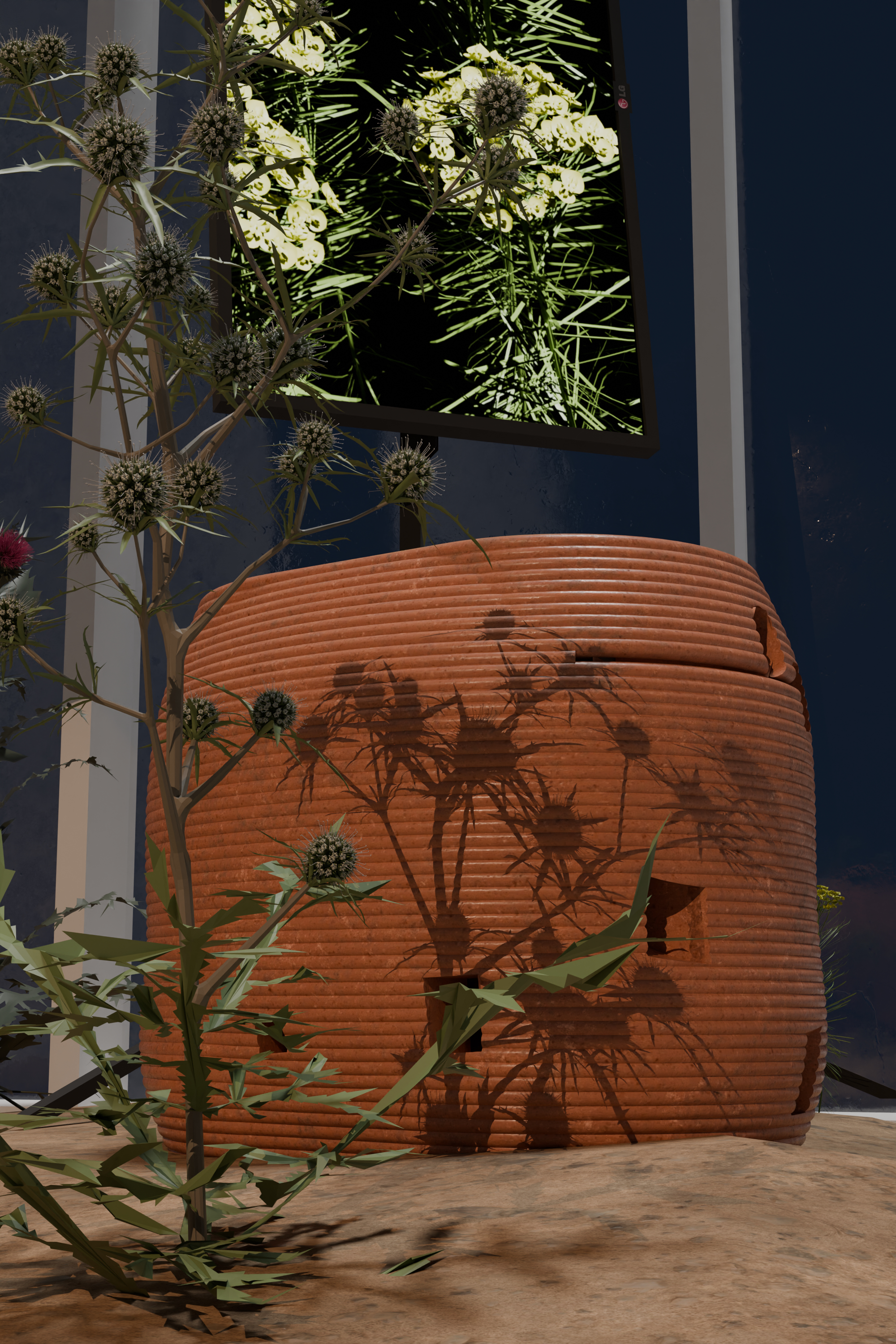

Over the course of the last decade, Mesa, Arizona has seen multi-billion dollar investments in data center and cloud computing infrastructure by major data corporations. As of February 2025, tech giants Meta, Google, and Apple conduct operations in the city, serving as a major hub for data center operations. Located on the outskirts of Phoenix at the foothills of the Colorado Plateau and the edges of the Sonoran desert, however, this new industry places pressure on the water infrastructure of an already water-stressed region. Used to cool servers in hot data centers in digital operations, water is commodified, altering the livelihoods of locals and shifting the ecology of the surrounding region. Faced with significant pushback and proposals to alter the zoning of the cities in light of these infrastructural developments, Mesa lies at the center of complex conflicts where computing infrastructure and the environment intersect. In this installation, we aim to explore how the urban and industrial development aiming to run servers and running operations is harming arid ecosystems and cities.
The installation includes evaporatively cooled computers that run live renderings and visualizations on three screens. Inversing the ancient technology of a zeer pot—where a terracotta pot placed inside another creates an evaporatively cooled storage—the computers made of salvaged parts run hot as they render the images on the screens. The heat of the computers draws the water out of the zeer pot, where the water vapor dribbles into the living plants on the ground below. The screens depict plants from Maricopa County, where Mesa is located, and beyond, including plants that survive in riparian conditions that are dependent on a stable groundwater source, as well as rare plant species actively being protected by local ecological advocacy groups. The zeer pot computers render the frames of an animation of the at-risk plants alongside maps that demonstrate Mesa’s increased development. The selected plants, well-adapted to desert conditions, are indeed experts at surviving dry conditions, but are increasingly vulnerable to development and more extreme climate conditions. Together, the zeer pots, rendered plants, and living plants aim to examine and critique the ways that technological and computational development intersect directly with the built and natural environment. In this way, the installation urges viewers to consider the material impacts of computational infrastructure: running a program might just run Mesa—and its delicate desert ecology—dry.
Simon Lesina-Debiasi Massachusetts Institute of Technology, Postgraduate Teaching Fellow in Architecture
Sonia Sobrino Ralston Harvard University, Daniel Urban Kiley Teaching Fellow in Landscape Architecture